Using Students Voice to understand Diversity
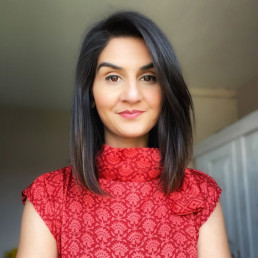
Written by Roma Dhameja
Secondary Vice Principal responsible for Teaching and Learning with a particular passion for Student Voice and teaching students Business, Economics and about Money.
Google ‘What is Diversity’ and you will see it defined as the ‘process of involving people from a range of different social, ethnic, gender, sexuality backgrounds.’ However, the way we often portray it is through a lens of polarisation. White or non-white. Male or Female. We know life is more complex than that. I, as a woman in her 30s of Indian heritage, cannot speak for every woman with that background and in that age bracket. Our experiences vary. It also doesn’t mean I have nothing in common with a middle-aged white man.
This doesn’t mean that we shouldn’t endeavour to ensure diversity in our board rooms/staff body. It means we have to pay closer attention to experiences rather than the way we classify ourselves, and that’s why I want to focus on the element of ‘involving people’ in the above definition. Because unless the communication channels are open, our understanding of unique experiences and similarities will remain stunted.
With this in mind, I have loved conducting student voice activities throughout my teaching career. Our students’ backgrounds affect the way they engage with education. I know this, I have experienced this. At age 4, I joined the British education system with English as my third language and not entirely fluent in it either. Rather than celebrate my trilingual abilities, I was always innately aware that having not mastered English first I was seen to have a disadvantage. This became more apparent as I studied English Literature at A Level and whilst my peers could reference Greek Gods I had a wide variety of Hindu God’s I could refer to with an impressive array of powers but none that were going to make me understand references in the poetry required on the syllabus.
Often this lack of exposure to Western cultural references can be seen as a gap, something to fix and fill, and I understand that. After all, we have to prepare our students to pass exams and wrestle with the demands of the English language. But we also have an opportunity to unpick what they come to the table with.
I recently spoke to a group of students with English as an Additional Language and was in awe at the experiences not only they, but their parents had. One spoke to me about his parents being refugees from Pakistan and how his dad had obtained a degree in the Netherlands, which is where he was born and had then moved to the UK at eight. When I asked him of his experience moving to the UK he spoke about how he was going to one up his dad by making sure he did his A Levels in the UK, degree abroad and then an MA in another country. To him the world was his home, he just needed some time to figure out society in each country. He was a global citizen.
I’d gone to speak to these young people to look at home/school communication. Many of the questions had been asked before.
- Do your parents receive the letters we send home?
- Do they read them?
- Is it ok to send them in English or would you prefer them in a different language?
Yes, Yes English is fine, had been the response.
Digging a little deeper, it became apparent that the students were reading the letters going home to their parents. When asked if they read everything, their initial reaction was yes, of course. When I asked them to translate a paragraph for me in Urdu, it became apparent they would skip some bits. This made the school simplify the language of their home communication further, with students giving feedback.
I learnt a lot that day about the way we communicate with our young people and their parents. I learnt a lot about ensuring that we know who we are writing for. I learnt a lot about how many students are happy to talk about their background if they feel comfortable, and we are willing to listen and celebrate the richness of it.
On another occasion I learnt a lot more about why some of our students from diverse backgrounds were not applying to Oxbridge despite having the grades than I ever would sitting making assumptions. I won’t tell you why because their reasons may not be the same as those of the young people not applying at your school. And that’s what we need to unpick, all of us, through regular, consistent student voice activities. What I did love however is how many of them were making the right choices for them, taking into account their culture and the lifestyle they wanted to lead.
We also need to be careful about the way we interpret student experiences. For instance, students’ parents may not attend parents evenings because they have no experience of the British education system and may send older siblings, uncles or aunts instead. In these instances you can have a very engaged extended family. How do we work with that? The cultural experiences of our young people can be very rich and we have to ensure we are not, at some level judging them as good or bad when they may just be different.
Listening to our students’ voices can teach us so much: what our students value in their homes… what shapes their perspectives… who are their role models… This is all powerful knowledge. It is a two-way gift. Not only does it give us an insight into their world, it also encourages them to talk confidently about their experiences, no matter how different to the status quo they may be.
The Room Where It Happens - Promoting Diversity through Fiction in the Sixth Form Library
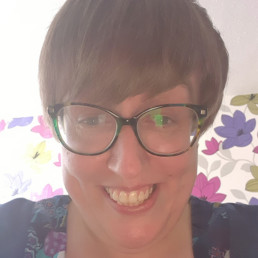
Written by Olivia Edmonds
Learning Resources Manager (with responsibility for the Library) at FE Level in Birmingham. Former Secondary English teacher of 10 years.
On my first day as a Learning Resources Manager at a Sixth Form College in the Midlands, the then Principal said to me, “Olivia, our students don’t read – and they need to. You need to get our students to read.” This was a challenge I was more than happy to accept, but looking at the wider context of the College, this turned out to be a bigger battle than I first expected. The College is situated in one of the most deprived areas in the country and serves a predominantly ethnic minority community, where many students use English as a Second Language. With limited opportunities to develop their cultural capital and without access to community Libraries (due to Government cuts), it made me realise the importance of the Library I was now in charge of, as well as the impact that it could have on the lives of its students.
My first focus was to make our stock as relevant and engaging for our students as possible. This also presented its own unique challenges. The stock I inherited from the previous Librarian was completely out of date and based on my experience at my first school (which had a similar cultural and religious demographic), not fit for purpose. To me, the importance of representation in books is key to engaging young people in reading, so when the Library shelves contained the works of authors such as Geoffrey Archer and Barbara Cartland, it was easy to see why the Library usage was so low. Couple that with the severe lack of books representing any of the protected characteristics of the Equality Act 2010, and it was clear to see the areas that needed addressing. I wanted the Library space to be a supportive, inclusive and engaging learning environment. A place in which our students could, in a safe space, learn about and ask questions about things they may have never discussed before and for this to happen, major changes were needed.
Working alongside the College’s Equality and Diversity co-ordinator, as well as a focus group of students and other staff, we worked together to assess what of the current stock was fit for purpose, what stock was unfit for purpose, and what stock could be fit for purpose if appropriately updated. It was the findings of this exercise that I was then able to take to my Line Manager and then onto SLT, who approved the decision for me to fully replace all of our fiction/Reading for Pleasure books with more appropriate, relevant, and engaging stock. This up-front investment in stock has meant that any additional or recently published stock has only needed to be purchased in small amounts to reflect the changing times in which we live.
When choosing new stock, I wanted to ensure that the variety of Own Voices stories was as wide as possible. I felt it was not only important for students to have access to stories relating to issues they have not come across before – such as different religions, sexualities, and cultures – as it was to have access to stories where they have some familiarity. Overall, my main aim in choosing new stock was for our students to be able to see themselves in the texts we have. With continued support from our students, as well as guidance from staff at Peters Books, Browns Books for Schools and our local Waterstones, we were able to create a collection that provided a solid base for us to build on as years passed. This collection has now allowed us to build our students’ engagement with a range of topics, including national and international events and cultural movements (thus improving their cultural capital), and has resulted in increased student loans, in depth liaison with teachers to provide further links between fiction and the Curriculum, and hosting a series of speaker events, ranging from authors to representatives from different religious backgrounds.
I feel that there will never be an end point when it comes to diversifying a Library collection, especially when it comes to Fiction. We live in an ever-changing society, where every day there are new issues raised and new opinions formed. Furthermore, the access to on the spot news being almost instantaneous means we, as Librarians, need to be aware of what our students are consuming and facing. If we can truly allow them to learn and be educated about a wide range of diverse matters in a safe environment, such as our libraries, then we have more chance of our young people being the true change that our world really needs.
Autie@40
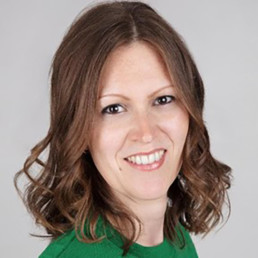
Written by Katie Friedman
Katie Friedman is an ex-Deputy Headteacher and Future Leader who now runs https://www.goldmindneurodiversity.com/ and is an accreditation coach with the MTPT project.
I was diagnosed as Autistic with Attention Deficit Disorder (ADD) this year, aged 40. When I first discovered my brain was different, I felt like an imposter – like I had only been autistic for five minutes but of course, I was born this way. What is new is the unlearning of unhelpful narratives thrown together in the absence of diagnosis. It feels like this late discovery has propelled me to the core of who I really am, past the layer of who I pretend to be and the layer of who I am scared I am.
Nearly three years ago, spurred on by a national leadership programme, I felt it was time to move on from the school I had been in for 10 years. I was promoted to a school whose Executive saw my ambition and verbal skills at interview. What they and I didn’t acknowledge was the disorganisation that had been masked by admin support. I went to expand my repertoire moving from a Teaching and Learning remit to be a Deputy Headteacher with responsibility for Behaviour and Safeguarding. The conditions for successfully making the leap in expertise were not there; soon after starting, the Headteacher and Assistant Principal in charge of Safeguarding went on long term sick leave; my husband who was sharing a lot of the childcare of our three young children, landed a promotion in London. It soon became clear I was out of my comfort zone and my support structures were dissolving at home and at school. I started to crumble much like the 1960s building I was working in. I couldn’t mask for long. I was overwhelmed, stopped sleeping and burnt out. When the decision finally became black and white: keep going and crash the car on the way to work or get well and parent my kids, I went to the doctors and got signed off. I now know that my experience of burn out was not simply the ‘glass cliff’ (where women often have to negotiate difficult roles in order to get promoted) and that my neurology also played a part.
After some mindfulness counselling and help from my union, I finally understood that walking away was wisdom and not failure and I decided to hand in my notice. I would have to do leadership differently and decided to train as a coach alongside part-time strategic leadership positions. I realised that ease and staying with not knowing (essential to coaching) were not things I had much practice of after 15 years in teaching and school leadership. Coach training helped me reconnect my mind and body, grounding me in the present and slowing my thinking to hold the space for others to think.
I got great feedback on my coaching course but everyone said I needed to be kinder to myself. I realised there was a block to my self-acceptance. A psychometric test pointed to an unusual brain with all my top strengths being in one category: strategic. These milestones of self-discovery led me to read about autism. Tiana Marshall’s Asperger traits in women profile took about three reads before I realised just how much the profile described my lived experience. Suspecting autism was not helpful however as I was subscribing to all kinds of ignorant stereotypes of deficit; no empathy, no emotions, no theory of mind, black and white thinking blah blah blah…..
I finally decided to brave a diagnosis. Just before the report was sent to me, I remember being really scared, a bit like the fear of social rejection; that I wouldn’t be autistic ‘enough’. I think I was scared that it would undermine my growing confidence in my intuition; that I was born this way and could stop trying so damned hard to do and be better. I needn’t have worried. Not only did I pass but ended up getting tested for ADHD which I had not been prepared for.
My brain had to process all this in the middle of an intense period of home school/ work juggle when my husband had to work away for a week. I started to see everything I had masked over before and suddenly understood why the difficulties were described as a ‘disability’. It’s really frustrating when you are well above average in some areas and under average in others. It can feel like you are two people. Since the external validation of diagnosis, frustration has become empathy. I am starting to recognise my sensory needs and propensity for overwhelm and take steps to manage. I am more accepting of my challenges and find support rather than getting frustrated or believing they will go away if I just try harder. I can really appreciate my strengths having seen my test scores for the cognitive assessment and have stopped dismissing them as things that everyone must have. I can finally accept myself and take care of my unique brain and manage my energy and concentration.
I am so glad I now know but I actually dread to think what rubbish I could have imbibed about myself if I had been labelled in the 80s and 90s. This insight is thanks to a well explained history of autism from the brilliant ally Steve Silberman in ‘Neurotribes’. Some adults from my generation have really shown their age with beauties like;
– ‘we are all on the spectrum’. This negates my experience and misinterprets the spectrum as linear.
– ‘Alright, Rain Man’. Wow.
– ‘You’re still my friend’. Actually, not anymore.
– ‘I always thought your dad and your aunt were weird’. Brilliant.
I am privileged to be married to someone who is well connected to his intuition, quietly confident, brilliant at admin, tidying and planning and for the most part, always up for the next adventure I instigate. I’m lucky to have many friends, educator colleagues and coaches in my life working in the self-acceptance, belonging, equality and diversity space. They are an army of people who own their labels and are willing to work hard in allyship with the intersectionality and inclusion of others. They have supported and championed me when I couldn’t. They have leant me their intuition when I couldn’t feel it, educated me, advocated for me, called me in and edited my work, applications and writing. @Clairerising, @itsaishathomas, @abitidball, @Angela_Browne, @comcoachingorg, and @DominiChoudhury I see you!
When I came out to the #actuallyautistic community on Twitter, I laughed through the tears as I realised I was expecting an outpouring of love and emotion from a tribe whose emotion comes when it comes not when someone asks for it. Integrity, challenge, drive and true kindness have been offered in abundance by people in the community and I know I am home.
Lockdown has made me realise that my kids are neurodivergent too and we are now in the process of their diagnosis. I hated the admin but it was very empowering to say ‘I am an ex-Deputy Headteacher and I am autistic with ADHD’ to the SENDco in my children’s school. It pays to be a privileged insider. It also pays to lead, bravely.
I coach leaders in education who want to do things differently and people who think differently (diagnosed and undiagnosed). Coaching works on the premise that we are all OK and whole and do not need ‘fixing’. The truth is we all need to change, not who we are but assumptions and perceptions we have so that we can see ourselves and our leadership clearly. Coaching helps us explore safely without fear of failure. Really good coaching helps us see our gifts and access our wisdom free from sabotage. 17% of the population are neurodivergent (Autistic, ADHD, Dyslexic and Dyspraxic) whether they know or not. My intuition is that there are far more neurodivergent people who think differently in education than we realise. My guess is that many of us deeply understand the process of learning and yet we are described from a place of deficit as ‘disorders’. Whilst there are challenges to thinking differently, there is brilliance which we can’t afford to overlook. I am often taken with the creative language Neurodivergent clients use or the way they can get to the crux of something quickly and how they can generate ideas about how to move forward. I also know that there will be many creative minds who have left education as their Schools would not be flexible around their needs.
Post-pandemic, we have proven that flexibility in work patterns and environment is possible and for some it may be desirable. People who are different and think differently are key to propelling the innovation needed to ensure education meets the changing needs of the 21st century, post-pandemic. The educational landscape has changed and neurodivergent trailblazers, liberated through understanding their neurodivergence can lead ahead of the curve if we nurture their talents.
You can find out more here: goldmindneurodiversity.com
Disability Awareness in Secondary PSHE
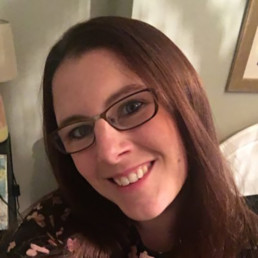
Written by Sophie McPhee
PSHE Coordinator in a West Midlands grammar school and Programme Director for the national Year 12 health and wellbeing enrichment programme Change Your Mind.
As committed life-long learners (I hope!), we sometimes get those ‘Oh wow!’ moments where suddenly, our eyes have been opened to a concept we’ve never considered before, and may even be obvious once we’re aware of it, but now we see part of the world in a completely new light. This is exactly what happened during a workshop Liz Wright (http://www.elizabethwright.net/) delivered at my school for our annual Mental Health Week in 2020, where she introduced to me and my students the social model of disability. Up to that point, the closest I had come to really thinking about disability in my 36 years was as a child, when my mum said she didn’t like a particular word beginning with ‘s’ commonly used as an insult when I was growing up in the 90s, because it was derived from the accepted term for people like her sister, who had cerebral palsy.
I feel ashamed to admit that I had to actually be taught to view disability as something created by society and not someone’s physical or mental difference – I had never even given disability the space in my brain for that thought to emerge independently. However despite my shame, it was a blessing, too, as it led to the firm decision during that workshop that disability awareness was not going to be a one-off session for an event week, but become a firm fixture in our PSHE curriculum. I will honestly say that I had never even considered doing this before – but isn’t that the point? If something is not within our lived experience – and I use that term broadly, to include having close contacts who are disabled – then the problem is not that we consciously think it doesn’t matter, but that it doesn’t even enter our head in the first place. I guess that this is a kind of unconscious bias – we only grant an issue more than a fleeting awareness if it relates to us in some way.
To be honest, I was also a little scared of covering this topic in my lessons, even if I did firmly feel that like me, my pupils should be woken up to – and the use of ‘woke’ is not accidental here, nor is it a pejorative – how they can be an ally to people with disabilities. There is absolutely such a thing as ‘non-disabled fragility’ (albeit not as catchy as the ‘white’ equivalent), whereby those of us without disabilities are so scared of getting it wrong, or speaking for or over those with lived experience. I am careful to point out in all my lessons that as a socially privileged woman, I am passing on what I have learned, but am by no means done with that learning. I made sure that once I had finished creating my lesson, I sent it to Liz and she kindly checked it over, patiently and gently pointing out a couple of places where I had used ableist language. It was a model of what educating others should look like – non-judgmentally uncovering and explaining problematic language which could have otherwise embedded problematic thinking.
I have now delivered this lesson to classes in Y9-11, some as live lessons, others as a pre-recorded version followed-up by a post-learning quiz. It appears that it has been successful, gaining an average rating of 4.4 out of 5 from students, most of whom said that they intend to change their language as a result of this lesson, both when referring to and talking to disabled people, and now know that common insult words are often derived from terms used in the past to refer to disability. Very often, pupils judge their lessons on whether they need to know the content for an exam or future career, but in PSHE, it’s not always about that, it’s about what others need them to know. We need, through these and other lessons which explore the vast range of human experience, to help pupils understand that creating a more inclusive and just society does relate to them. It might not do so always in a tangible sense, yet it weaves its way into not only our institutions, systems and processes, but also the quotidian, such as our face-to-face and social media interactions. Additionally, I would argue that there is most certainly a personal benefit to this kind of learning. It is incredibly enriching to understand better those whose experiences of life are different to yours. However, our pupils will only appreciate that benefit if they can first move away from viewing the purpose of education as leading to their future in purely material terms. And that is something all schools have in their power to influence.
You can access the disability awareness lesson at theother16hours.wordpress.com.
Getting Skilled and Diverse Governors on Boards
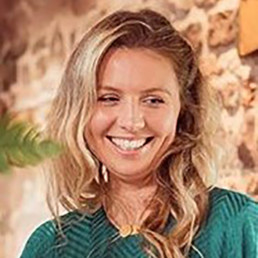
Written by Lydia Bower
Marketing and Communications Manager at education charity Governors for Schools.
The lack of diversity is, and has been for a long time, a problem on school governing boards.
A diverse governing board is a stronger board, reflecting school communities and the wider country. In 2020, over 30% of our volunteers were from BAME backgrounds, and over 65% were under 45, not to mention having different socio-economic backgrounds, and diverse skills, life experiences, and perspectives.
But these stats aren’t representative of most school boards. In 2020, the NGA’s annual governance survey found that 94% of governors and trustees who were surveyed identified as white. Only 1% of respondents identified as Black/ African/Caribbean/Black British, 2% identified as Asian/Asian British, and 1% identified as mixed or being of multiple ethnic groups.
The same survey found that only 1 in 10 governors and trustees were under 40 (11%), and only 2% were under 30. Boards need people of all ages and backgrounds to challenge group think and ensure robust decision making. Younger governors also have a perspective on education older governors simply can’t replicate. While older governors undoubtedly bring valuable skills and experience to the board, they don’t have recent experience of the education system, or know what it’s like to be young now.
We’ve created a quality mark for schools to use to show their commitment to finding skilled and diverse governors through an independent organisation. Displaying the mark is an assurance to all those in the school community that the board values diverse governance.
The survey figures are not reflective of the schools governors serve. The Department for Education’s school data for 2020 shows that in primary schools, 33.9% of pupils are of minority ethnic backgrounds. In secondary schools, 32.3% of pupils are of minority ethnic backgrounds. Of course, these figures will vary in different parts of the country, but the overall picture is one of governing boards failing to represent the communities they serve.
Boards that register vacancies with us have a higher chance of finding a new governor from a diverse background – in terms of both ethnicity and age. However, we understand that for many schools, while finding governors from diverse backgrounds is important, they also have a number of vacancies that need filling. Schools with more than one vacancy risk being left without the skills needed to run effectively.
The quality mark is still a useful tool for schools who find recruiting new governors a challenge. It shows that they understand the need for diverse governance, and have taken steps to address it.
In areas that aren’t very ethnically diverse, finding governors from BAME backgrounds can naturally be more difficult. However, the changes we saw in 2020, specifically the move to virtual governance, has opened up the possibility of having remote governors join boards. Although we expect to see governing boards resume face to face meetings in the next academic year, schools have had to adapt quickly to virtual meetings. This new way of meeting has led to an increase in the number of schools now considering remote governance and inviting those who don’t live locally to join the board. It’s an opportunity for boards to get the perspective and experience they need, and opens up hard-to-reach vacancies to a wider pool of volunteers.
Our webinar panel discussion in September 2020 discussed how to increase diversity on governing boards. The webinar featured a panel of educationalists and governance specialists talking about the steps boards can take to improve their diversity, and a key takeaway was not relying on personal contacts as this often results in recruiting people with similar backgrounds and experiences. By adding the quality mark to their website, schools can demonstrate their commitment to finding governors who can bring the skills, expertise, and diverse perspectives boards need to thrive.
You can read a summary of the information shared, and watch the webinar recording.
Has your school registered vacancies with Governors for Schools? Download the quality mark and show your school’s commitment to skilled and diverse governance.
Are you looking for new governors and want to prioritise finding volunteers who bring some diversity to the board? Register your governor vacancies with us online and we’ll search for a volunteer who best matches your requirements.
The False Flag Flying of ‘No Institutional Racism’
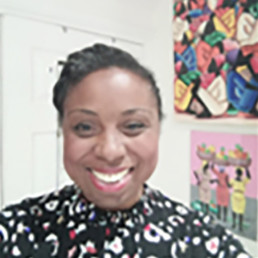
Written by Rachel Clarke
Working with many leaders to improve schools, Rachel is a "passionate, dedicated and inspirational educator, who strives for success with students and educators".
The absence of any acknowledgement of the existence of institutional racism in the UK education system, is a sad indictment of these times. In the context of George Floyd’s trial, the Oprah interview with Harry and Meghan and the glaring difference in response to Sarah Everard’s murder compared to Bibaa Henry and Nicole Smallman’s, much of the nation has been discussing race and the existence of racism. It felt as if education was slowly waking up to the systemic racism that exists within it. To then hear the outcome of this report, feels as though the conversation is firmly ‘off’ the agenda now.
The meritocratic framing of how well ethnic minorities achieve, makes no reference that where this is true, this is in spite of the racism that exists, not because it doesn’t exist at all. The ‘well if you have families with high aspirations, children will achieve’ sentiment is firstly not comprehensive enough and secondly, echoes the long held belief that it’s the fault of the individual and no responsibility needs to be taken by the institution to ensure all children achieve their potential.
Then we have those who are of Black Caribbean heritage, who appear to have outcomes that start off quite strong (68%) at the end of EYFS, then plummet to 26% at GCSE. The high exclusions are referenced, as is the need for more ‘diversity’ training to be on ITT programmes. However the report fails to unpick the link between individual racism, institutional racism and structural racism that exists that facilitates these statistics. The silence on this is shameful. Yes, wider factors do affect outcomes of children and young people but it is no coincidence that the group whose ethnicity is still framed around negative 17th century hierarchies of race, are the ones being over-represented in negative statistics.
With a workforce of approximately 90% from a White British background, our education system has a duty to ensure that biased views/opinions aren’t given the opportunity to thrive, but are deliberately challenged, so all children achieve their potential. Racism is not just a one off act of violence/aggression but more often, is the drip, drip, drip effect of racial action over time that has to be explored as being central to these poor outcomes.
Despite the report stating that “if there is racial bias within schools or the teaching profession, it has limited effect …”, it is clear that we have to change our approach if we genuinely have a desire to have an education system that meets the needs of all. Now is the time to educate the educators to start the hard work of challenging racism.
The Power of Multiple Perspectives
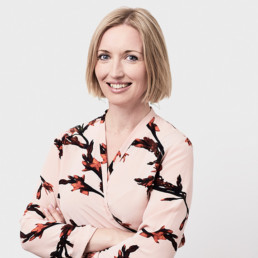
Written by Paulina Tervo
Co-Founder and Co-CEO at Lyfta; an immersive learning platform for educators.Her background is in documentary filmmaking and web production.
I’m holding a heavy camera in my arms, which are shaking from the sheer weight. It’s 35 degrees; hot, humid and I’m standing in the middle of the biggest slum in Dhaka, Bangladesh, filming a UK A-list celebrity who is crying and talking to the camera. We have just visited several homes in the slum, where we have met young mothers, who are still children themselves, who live in abject poverty and whose children are malnourished. My brief for the day has been to make the A-list celebrity cry in front of the camera, because that’s what will make people donate to the charity that I am doing the work for. I start crying myself, because of the absolutely devastating stories of hopelessness that we are telling, and because I have been told by the local staff that the families we filmed are not beneficiaries of their aid, and therefore will not be helped.
What this narrative was doing was problematic for many reasons. Not least because it reinforced the white saviour narrative, portrayed the poor as a helpless one-dimensional group who are only going to be saved by our charity. It also showed only one side of the story. What we didn’t tell was how the young mother might have been part of a women entrepreneur’s group, saving together to launch a business, or how she is a resilient and resourceful person. We didn’t humanise her, we victimised her, objectified her even.
I felt disgusted and embarrassed for being there. It was the first time I had ever taken an assignment like this, and it was absolutely going to be my last. It was clear to me that what we were doing would not bring about sustainable change. I realised that I wanted to tell stories that were empowering, and even if they had tragedy or difficulties in them, they would humanise and have hope.
A very different story
Fast forward 5 years, I am filming another young mother, this time in Helsinki, Finland. This is where I come from.
Habiba was a child when she came to Finland in the early nineties as a refugee from Somalia. To give you some background, in 2018 over 50% of Somalis in Finland were unemployed, and when it comes to women, that figure was even higher. Many Somali women become nurses or work in other caring professions. When Habiba told me that as a teenager she had been told by a school counsellor that she would be best off becoming a nurse, as that’s what most other Somali women do, she decided that wasn’t going to be her route. Her interest was in citizen activism and politics.
Habiba always knew she wanted her own career while also fulfilling her duty as a mum. By her mid-twenties, she was the proud mother of 7 children when the relationship with her husband broke down. Committed to her aims towards social justice and advocacy for others, she chose to become a city councillor and started to work for her community, to help young people who faced institutional racism which put them at risk of marginalisation. It hasn’t been easy for Habiba to do what she is doing, she faces constant hate speech and racial abuse.
The story we ended up telling about Habiba, like the other stories on the Lyfta platform, is emotionally powerful, yet hopeful, inspiring and empowering. Habiba is an incredibly resilient and positive person, reflective and committed and provides a powerful role model for us all. She makes us see that despite adversities, we can still follow our dreams.
Habiba’s story has now been seen by thousands of children and teachers in the UK and Finland. For many people, she is an incredible role model, and for others, meeting her has given them a window into someone’s life, whom they might otherwise never have met. They would have heard a story that showed them a new perspective.
Habiba’s story is one of many human stories featured in Lyfta’s learning environments called storyworlds. At Lyfta our mission is to share beautiful human stories from around the world to better understand ourselves, each other and our future – as individuals, as communities and as an entire planet.
Storytellers and media outlets have a big responsibility as to how we tell stories, because stories shape our world and shape perspectives and attitudes. So it really matters how they are told. The world is nuanced, complex and beautiful and there are a million ways of telling someone’s story. At Lyfta, we choose to tell stories that humanise people.
What is Lyfta?
Lyfta is an award-winning teaching platform made up of interactive 360° spaces and soundscapes of real homes, workplaces and environments from around the world. Students are invited to explore, unlock rich media content, and get to know real people through powerful and inspiring short films.
The resources are ideal for teaching a range of subjects, skills and values and the UN SDGs. The ready-made lesson and assembly plans cover a range of vital themes such as sustainability, wellbeing, human diversity and compassion, and are ideal for nurturing skills and values such as empathy, resilience, and critical thinking.
Lyfta offers free training and trial access – find out more at www.lyfta.com/training
Journey to the Job
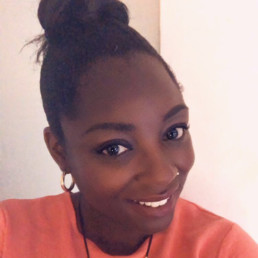
Written by Azuraye Williams
Year 6 Teacher, Science, PE, Diversity and Inclusion Lead.
Initial Thoughts
It can be so hard looking for a new job as a black or brown teacher. Your first thought might be to look at the teaching staff of the school and see if there are any other people of colour working there. With the recent statistics that have been made wide news, you will understand that it can sometimes be quite hard to find such a place.
Once you have searched, you may have a few of the following questions to think about:
- Is the school ‘ready’ to have a black or brown teacher there?
- Am I ready to work somewhere that I will be ‘culturally alone’?
- How will the school deal with anything towards race, identity, racism and culture?
- How will they respond to me if I talk about something I feel uncomfortable with?
- Will the school support my progression or will I just be there to ‘tick a box’?
These questions will be flowing through the minds of people of colour before they even think about if they really want to apply for the job. Sometimes this process alone is enough to talk you out of even applying.
The Process
The next thought is the writing process. You may worry that to even be in with a chance of an interview your letter has to stand out even more – especially if your name is of a cultural background- as the schools may have already shown that it does not openly employ black or brown people.
Then you think about the interview with thoughts such as:
How can I seem as though I can ‘fit in’ to the school, while also wanting to embrace my own true self?
Or,
Will I see someone who looks like me on the interview panel?
What Now
Now although I say this, I am not speaking for all black and brown people or indeed about every interview. I just wanted to speak my own truth to share experiences and conversations I have had with other black and brown educators.
The reason I say this is because although it is important to teach the children about different people and cultures, to truly bring the teaching world alight for people of colour, it starts at the top. Employing people of colour and actually listening to them when they make suggestions or point out something in school rather than just feeling it is ‘the right thing to do’ to tick a box or ‘look good’ from the outside.
It isn’t enough for schools to put a plaque up and a heading on their website to say they are anti-racist if their whole culture and ethos shows the opposite. Employing and learning about other cultures is one thing but truly allowing eyes, hearts and minds to be challenged in their biases and allowing the discomfort this may bring to elicit deeper change is what is really needed in schools.
So many black and brown teachers enter into this system as enthusiastic, knowledgeable and hard working individuals and yet they leave the profession years later being down-trodden, overlooked, misrepresented and sometimes (more often than many would like to say) mistreated.
Remember, this is a whole school approach and it is everyone’s responsibility to develop this across school. Higher leaders and educators have the capacity to make these real changes as without the support and backing from those higher up in the hierarchy, no amount of diversity lessons will make any real difference to the school culture.

